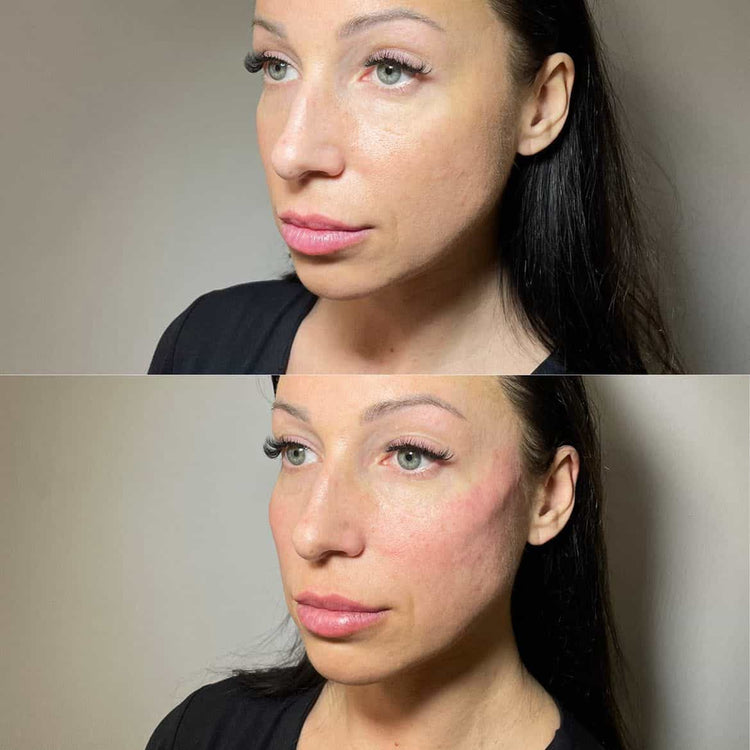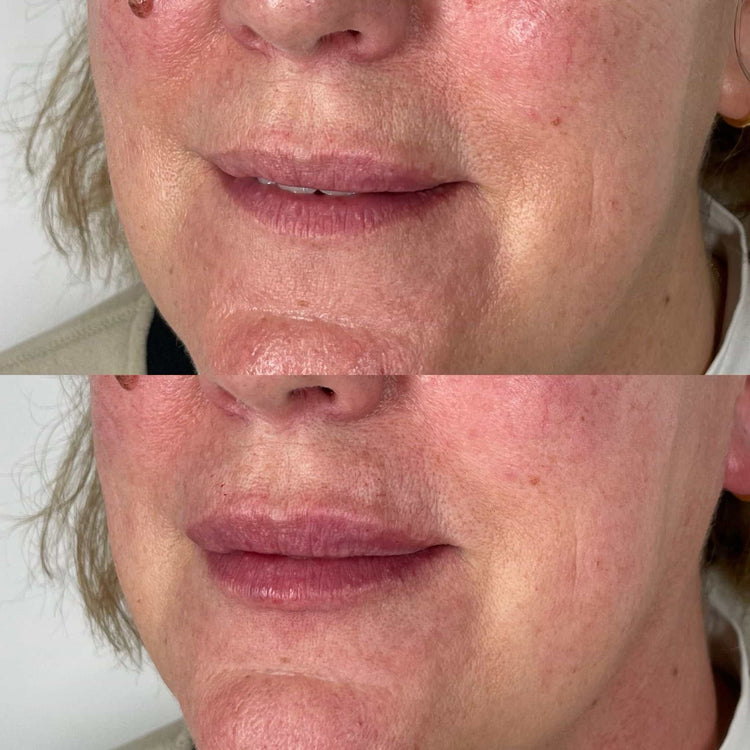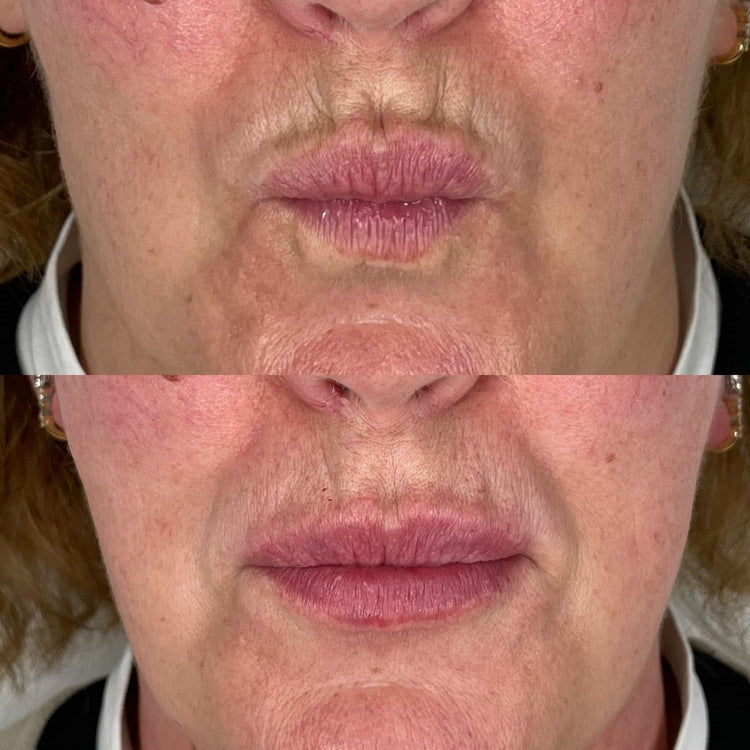How To Find A Qualified Dermal Filler Practitioner In The UK
Finding a Qualified Practitioner
Embarking on the journey to enhance your appearance with dermal fillers involves finding a qualified practitioner who can deliver safe and effective results. Navigating the field of aesthetics can be overwhelming, so identifying a skilled professional is paramount.
Checking Qualifications and Experience
When choosing a dermal filler practitioner, verifying their qualifications and experience is crucial for ensuring your safety and desired outcomes. Begin by checking if they are registered with relevant regulatory bodies such as the General Medical Council (GMC) or Nursing and Midwifery Council (NMC), particularly if they intend to administer injections.
Inquire about their training and experience in dermal fillers, ideally seeking someone who has completed a recognised course from a reputable institution. Look for practitioners who are up-to-date with the latest techniques and products, as the field of aesthetic medicine is constantly evolving.
Don’t hesitate to ask for before-and-after photos of previous clients to gauge their skill and style. Additionally, consider consulting online reviews and testimonials from satisfied patients to gain further insights into their professionalism and expertise.
Reading Reviews and Testimonials
Reading reviews and testimonials from past patients can provide valuable insights into a practitioner’s skills, communication style, and patient care. Websites like Google Reviews, Facebook, or dedicated aesthetic platforms often feature patient feedback.
Pay attention to recurring themes in the reviews, such as mentions of expertise, professionalism, comfort during the procedure, and satisfaction with the results. Be critical and consider both positive and negative feedback, as a balanced perspective can offer a more realistic understanding.
Asking for Referrals
Word-of-mouth referrals can be invaluable when seeking a qualified dermal filler practitioner. Ask friends, family, or colleagues who have had positive experiences with dermal fillers if they would recommend their practitioner.
You can also inquire with your primary care physician or dermatologist for recommendations. They may have connections with reputable aesthetic practitioners in your area.
Understanding Dermal Fillers
Dermal fillers are a popular non-surgical treatment used to enhance facial features and reduce the appearance of wrinkles. These gel-like substances are injected into specific areas to add volume, smooth lines, and create a more youthful look.
Types of Dermal Fillers
Dermal fillers come in various types, each formulated with different properties to address specific aesthetic concerns.
Hyaluronic acid (HA) fillers are the most common type, attracting and retaining moisture to plump skin and reduce wrinkles. They are temporary, typically lasting 6-18 months.
Calcium hydroxylapatite (CaHA) fillers provide a more structural support, making them suitable for addressing deeper wrinkles and volume loss. Results with CaHA fillers tend to last longer than HA fillers.
Poly-L-lactic acid (PLLA) fillers stimulate collagen production over time, resulting in gradual improvement of skin texture and volume. PLLA fillers offer a semi-permanent solution, lasting for 12-18 months or longer.

Other types of dermal fillers include polymethyl methacrylate (PMMA), which is a permanent filler used primarily for adding volume to cheeks and lips, and silicone-based fillers, which are less commonly used due to potential complications.
Treatment Areas
Dermal fillers offer a non-surgical approach to enhancing facial features and addressing signs of aging.
Common treatment areas include the forehead, frown lines (between the brows), crow’s feet (around the eyes), nasolabial folds (lines from the nose to the corners of the mouth), cheeks, lips, and chin.
These injectables can be used to smooth wrinkles, add volume to sunken areas, enhance lip size and shape, and define facial contours.
Risks and Side Effects
Dermal fillers are a popular non-surgical treatment used to enhance facial features and reduce the appearance of wrinkles. These gel-like substances are injected into specific areas to add volume, smooth lines, and create a more youthful look.

Dermal fillers come in various types, each formulated with different properties to address specific aesthetic concerns.
Hyaluronic acid (HA) fillers are the most common type, attracting and retaining moisture to plump skin and reduce wrinkles. They are temporary, typically lasting 6-18 months.
Calcium hydroxylapatite (CaHA) fillers provide a more structural support, making them suitable for addressing deeper wrinkles and volume loss. Results with CaHA fillers tend to last longer than HA fillers.
Poly-L-lactic acid (PLLA) fillers stimulate collagen production over time, resulting in gradual improvement of skin texture and volume. PLLA fillers offer a semi-permanent solution, lasting for 12-18 months or longer.
Other types of dermal fillers include polymethyl methacrylate (PMMA), which is a permanent filler used primarily for adding volume to cheeks and lips, and silicone-based fillers, which are less commonly used due to potential complications.
Dermal fillers offer a non-surgical approach to enhancing facial features and addressing signs of aging.
Common treatment areas include the forehead, frown lines (between the brows), crow’s feet (around the eyes), nasolabial folds (lines from the nose to the corners of the mouth), cheeks, lips, and chin.
These injectables can be used to smooth wrinkles, add volume to sunken areas, enhance lip size and shape, and define facial contours.
Like any medical procedure, dermal filler injections carry potential risks and side effects. It’s essential to understand these possibilities before undergoing treatment.
Common side effects are usually mild and temporary, including redness, swelling, bruising, tenderness, and itching at the injection site. These typically subside within a few days.
More serious, but less common, side effects can occur, such as infection, allergic reactions, blood clots, or changes in skin pigmentation.
It’s crucial to discuss your medical history and any medications you are taking with your practitioner beforehand to minimize potential risks.
In rare cases, dermal fillers can migrate from the injection site, resulting in an unnatural appearance.
The Consultation Process
The Consultation Process is a crucial step in ensuring a safe and successful experience when seeking dermal filler treatments. During this consultation, you’ll have the opportunity to discuss your aesthetic goals with a qualified practitioner, who will assess your individual needs and advise on suitable treatment options. This process allows for open communication, thorough evaluation, and informed decision-making.
Initial Assessment
The Consultation Process is a crucial step in ensuring a safe and successful experience when seeking dermal filler treatments. During this consultation, you’ll have the opportunity to discuss your aesthetic goals with a qualified practitioner, who will assess your individual needs and advise on suitable treatment options. This process allows for open communication, thorough evaluation, and informed decision-making.

- Initial Assessment: The practitioner will begin by taking a detailed medical history, including any past surgeries or allergies, and inquire about current medications you are taking.
- Discussion of Goals: You should clearly articulate your desired outcome, whether it’s smoothing wrinkles, enhancing lip volume, or adding cheek definition. Bring photos of yourself or images that represent the look you aspire to achieve.
- Examination and Evaluation: The practitioner will examine your face, considering facial symmetry, bone structure, and skin type to determine which areas are suitable for treatment and recommend appropriate filler types.
- Treatment Plan: Based on the assessment, the practitioner will propose a personalized treatment plan, outlining the specific areas to be treated, the amount of filler required, and the expected results.
- Risk Assessment and Q&A: The practitioner will explain potential risks and side effects associated with dermal fillers and answer any questions you have about the procedure, recovery process, or aftercare.
Discussing Goals and Expectations
The Consultation Process is a crucial step in ensuring a safe and successful experience when seeking dermal filler treatments. During this consultation, you’ll have the opportunity to discuss your aesthetic goals with a qualified practitioner, who will assess your individual needs and advise on suitable treatment options. This process allows for open communication, thorough evaluation, and informed decision-making.
- Initial Assessment: The practitioner will begin by taking a detailed medical history, including any past surgeries or allergies, and inquire about current medications you are taking.
- Discussion of Goals: You should clearly articulate your desired outcome, whether it’s smoothing wrinkles, enhancing lip volume, or adding cheek definition. Bring photos of yourself or images that represent the look you aspire to achieve.
- Examination and Evaluation: The practitioner will examine your face, considering facial symmetry, bone structure, and skin type to determine which areas are suitable for treatment and recommend appropriate filler types.
- Treatment Plan: Based on the assessment, the practitioner will propose a personalized treatment plan, outlining the specific areas to be treated, the amount of filler required, and the expected results.
- Risk Assessment and Q&A: The practitioner will explain potential risks and side effects associated with dermal fillers and answer any questions you have about the procedure, recovery process, or aftercare.
Reviewing Medical History and Medications
The Consultation Process is a crucial step in ensuring a safe and successful experience when seeking dermal filler treatments. During this consultation, you’ll have the opportunity to discuss your aesthetic goals with a qualified practitioner, who will assess your individual needs and advise on suitable treatment options. This process allows for open communication, thorough evaluation, and informed decision-making.
- Initial Assessment: The practitioner will begin by taking a detailed medical history, including any past surgeries or allergies, and inquire about current medications you are taking.
- Discussion of Goals: You should clearly articulate your desired outcome, whether it’s smoothing wrinkles, enhancing lip volume, or adding cheek definition. Bring photos of yourself or images that represent the look you aspire to achieve.
- Examination and Evaluation: The practitioner will examine your face, considering facial symmetry, bone structure, and skin type to determine which areas are suitable for treatment and recommend appropriate filler types.
- Treatment Plan: Based on the assessment, the practitioner will propose a personalized treatment plan, outlining the specific areas to be treated, the amount of filler required, and the expected results.
- Risk Assessment and Q&A: The practitioner will explain potential risks and side effects associated with dermal fillers and answer any questions you have about the procedure, recovery process, or aftercare.
Reviewing your medical history and medications is an essential part of the consultation process for dermal filler treatments.
This allows the practitioner to identify any potential contraindications or risks associated with the procedure.
Certain medical conditions, such as autoimmune diseases, bleeding disorders, or active skin infections, may make you unsuitable for dermal fillers.
Medications, including blood thinners, antibiotics, or some skincare products, can also interact with filler injections and potentially increase the risk of complications.
Aftercare Instructions and Follow-Up Appointments
Aftercare instructions are crucial for optimal healing and achieving the desired results from your dermal filler treatment. Your practitioner will provide specific guidelines tailored to your individual needs, but here are some general tips:
Avoid touching or rubbing the treated area for at least 24 hours to minimize the risk of bruising and infection. Apply a cold compress for 10-15 minutes at a time to reduce swelling.
Refrain from strenuous activities, including exercise and facial massages, for at least a few days to prevent the filler from migrating or becoming distorted.
Protect your skin from sun exposure by wearing sunscreen with an SPF of 30 or higher, as the treated areas may be more sensitive to UV rays.
Stay hydrated by drinking plenty of water to help your skin maintain its elasticity and promote healing.
Follow any specific instructions provided by your practitioner regarding medications, ice packs, or other post-treatment care measures.
It’s important to schedule follow-up appointments with your practitioner as recommended. This allows them to monitor your progress, address any concerns, and ensure the treatment results are satisfactory.
Typically, a follow-up appointment is scheduled within 1-2 weeks after the initial treatment.
During this appointment, the practitioner will assess the filler placement, check for any complications, and discuss any adjustments that may be needed.
Learn more about dermal fillers for volume restoration with Dr. Laura Geige at It’s Me & You Clinic
- Why Are My 11 Lines So Deep? - November 16, 2025
- What Is Tear Trough Filler - November 13, 2025
- Weed Infused Sodas With The Best Afterglow - November 12, 2025
